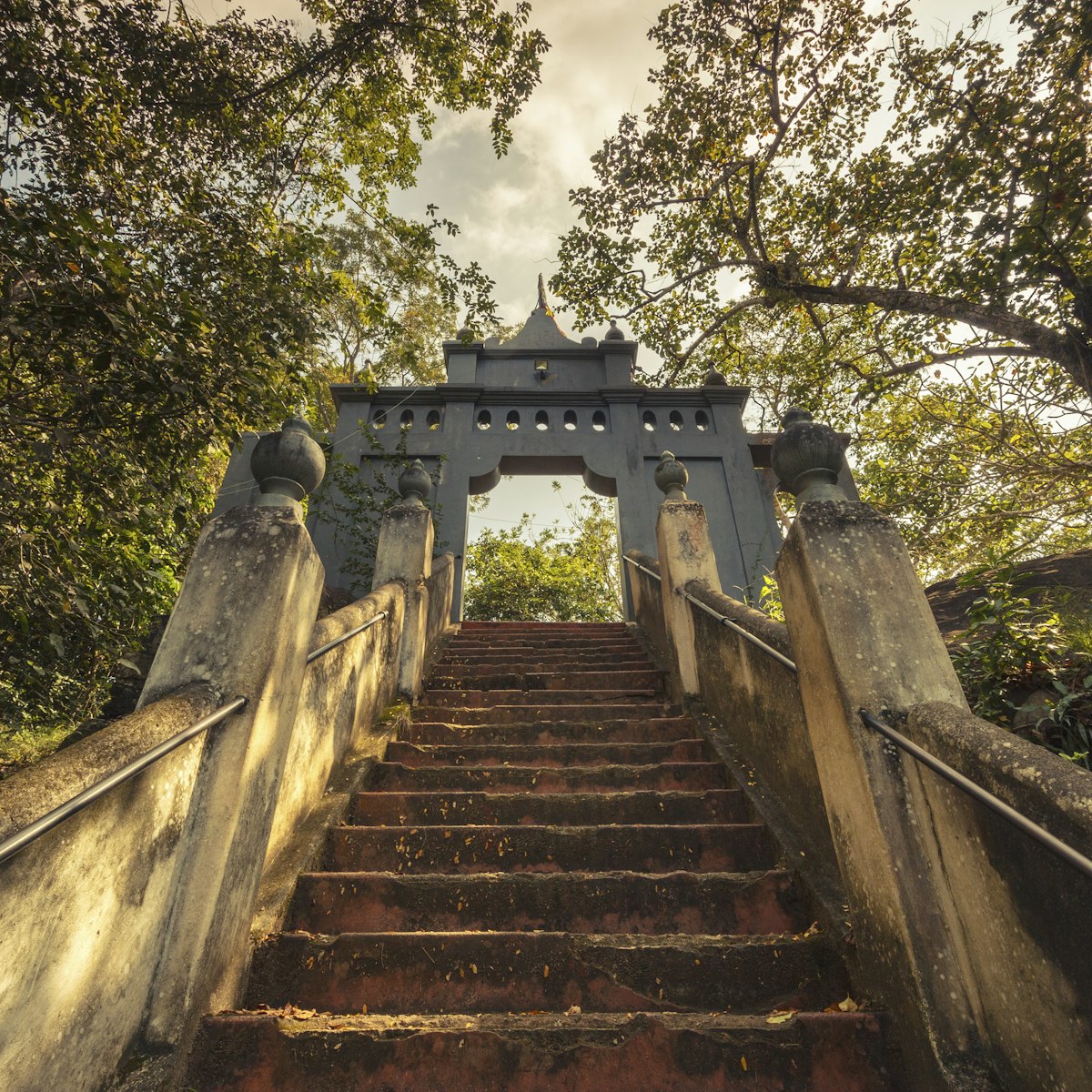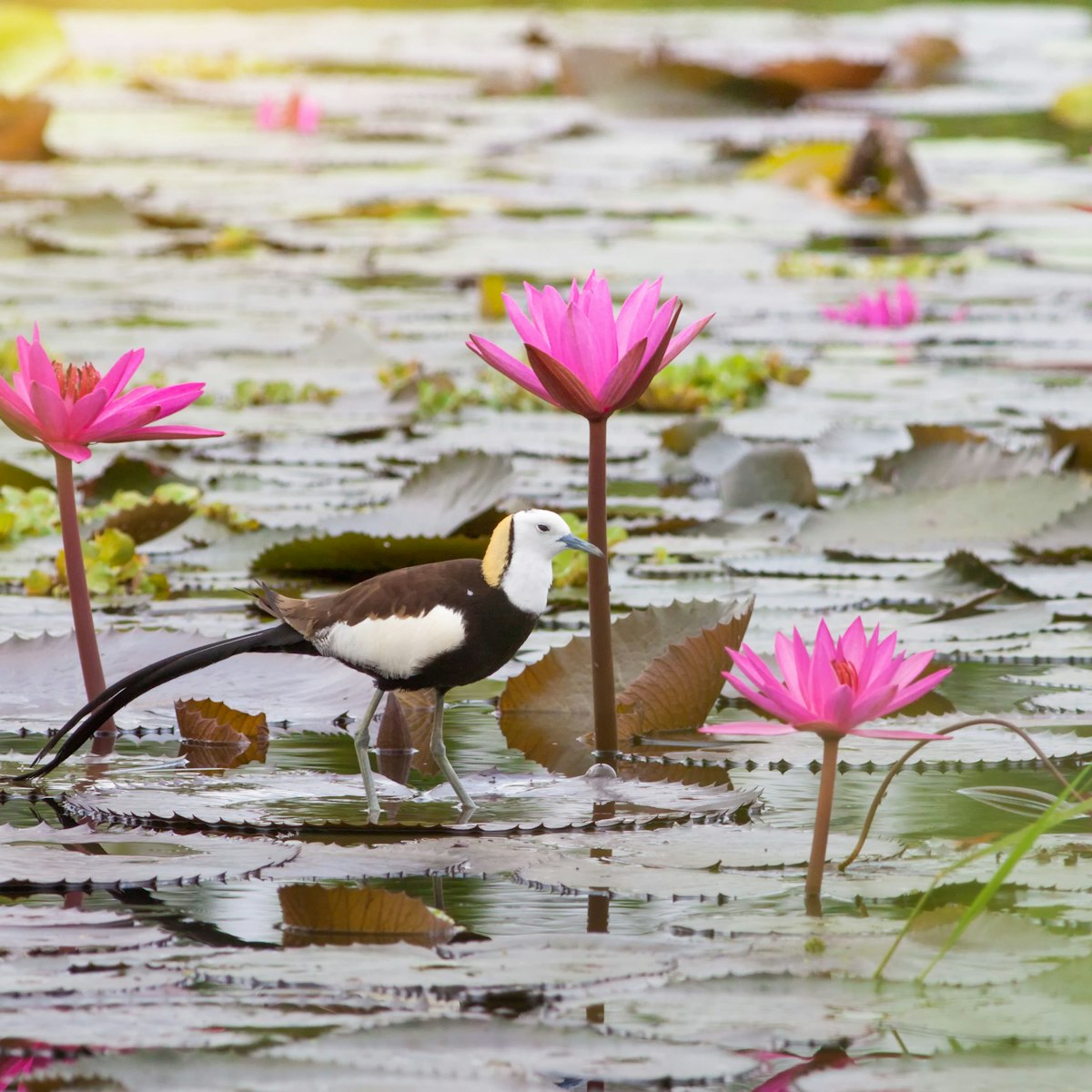With herds of elephants, wild buffalos, sambars and spotted deer, and giant squirrels, this Sri Lankan national park is one of the nation's finest. In fact, for elephant watching, Uda Walawe often surpasses many of the most famous East African national parks. The park, which centres on the 308.2-sq-km Uda Walawe Reservoir, is lightly vegetated, but it has a stark beauty, and the lack of dense vegetation makes game watching easy.
Elephants are Uda Walawe's key attraction, with around 600 in the park in herds of up to 50. There’s an elephant-proof fence around the perimeter of much of the park, (supposedly) preventing elephants from getting out into areas with a higher human population and cattle from getting in. Elephants can and do migrate into and out of the park along unfenced borders. The best time to observe herds is from 6.30am to 10am and again from 4pm to 6.30pm.
Alongside its famous elephant herds, the park is home to mongooses, jackals, water monitor lizards, lots of crocodiles, sloth bears and the occasional leopard. There are 30 varieties of snake and a wealth of birdlife – 210 species at last count; northern migrants join the residents between November and April.
Safaris around the park
The entrance to the park is 12km from the Ratnapura–Hambantota road turn-off and 21km from Embilipitiya. Visitors buy tickets in a building a further 2km on. Most people take a tour organised by their guesthouse or hotel, but a trip with one of the 4WDs waiting outside the gate should be around Rs 3500 for a half day for up to eight people. Last tickets are usually sold at 5pm.
A park guide is included in the cost of admission. These guys, who all seem to have hawk-like wildlife-spotting eyes, are normally very knowledgable about the park and its animals. However, unless you specifically request otherwise, the whole safari can be a rush between one elephant herd and the next, with no time to pause and enjoy the myriad other, equally interesting creatures who reside here.
To get the best out of a safari, explain to your driver and guide beforehand that you're interested in seeing things other than just elephants. When you stop at a sighting, ask your driver to switch off the engine so that you can hear the chatter of birds rather than the roar of the 4WD. Also be aware that, as in all of Sri Lanka's more popular parks, there are serious issues with drivers crowding and disturbing the flagship animals. As a rule of thumb – and for the benefit of the animals and the enjoyment of all concerned – there shouldn't be more than five vehicles at a sighting at any one time. If there are too many vehicles, ask your driver to pull back and wait, or better still, go and find something else to look at. Guides and drivers expect a tip.
Nearby accommodation and hotels
There's a wide choice of places to stay on the fringes of the park. Rates are high, though – expect to pay more than you would on the coast or up in the highlands. Day tours of the park are offered from Ella, Ratnapura, Tissa and many south-coast resorts. However, taking in a tour from these places means you'll be visiting the park in the heat of the day when all the animals are having a siesta. It's far better to spend at least one night here, which will allow you to do an early-morning and an evening safari.
Good accommodation options near Uda Walawe National Park include Silent Bungalow, Superson Family Guest and Elephant Safari Hotel.







